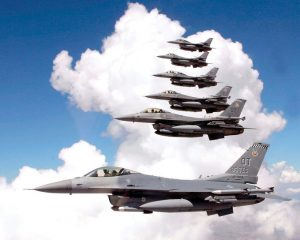Satellite images show China has built mock-ups of a U.S. Navy aircraft carrier and destroyer in its northwestern desert, possibly as practice for a future naval clash as tensions rise between the nations.
China has upgraded its military massively in recent years, and its capability and intentions are increasingly concerning to the United States as tensions rise over the South China Sea, Taiwan and military supremacy in the Indo-Pacific.
The images captured by Colorado-based satellite imagery company Maxar Technologies dated Sunday show the outlines of a U.S. aircraft carrier and at least one destroyer that sits on a railway track.
Also Read | US Navy launches USNS Harvey Milk to honour gay rights activist
Maxar identified the location of the features as Ruoqiang, a Taklamakan Desert county in the northwestern Xinjiang region.
The independent U.S. Naval Institute said on its website that the mock-ups of U.S. ships were part of a new target range developed by the People’s Liberation Army.
It wasn’t clear from the images how many details had been included in the apparent targets, although USNI said it had identified features on the destroyer including its funnels and weapons systems.
China’s massive military upgrade has emphasized countering the U.S. and other countries’ naval forces.
That’s included the development of land, sea and air-launched missiles to deny access and possibly sink opposing vessels, expressed most emphatically by the land-based DF-21D ballistic missile known as the “carrier killer.”
Also Read | Russia says its warship prevented US destroyer from intruding territorial waters
Recent months have also seen a substantial increase in Chinese military flights just southwest of Taiwan, the self-governing island republic claimed by Beijing as its own territory and which it threatens to annex by force. Washington provides Taiwan with much of its weaponry and U.S. law requires that it ensures the island can defend itself and to treat threats to it as matters of “grave concern.”
The images released by Maxar come amid growing concerns over the possibility of military conflict between the world’s two biggest economies, who are at odds over a litany of political and economic issues.
Most recently, the Pentagon this month issued a report saying China is expanding its nuclear force much faster than U.S. officials predicted just a year ago. That appears designed to enable Beijing to match or surpass U.S. global power by midcentury, the report said.
Also Read | US, China likely to reopen consulates after Biden-Jinping virtual meet: Report
U.S. defense officials have said they are increasingly wary of China’s intentions, largely with regard to the status of Taiwan.
“The PLA’s evolving capabilities and concepts continue to strengthen (China’s) ability to ‘fight and win wars’ against a ‘strong enemy’ — a likely euphemism for the United States,” the report said.
China’s navy and coast guard are also boosting their numbers of vessels at a record pace, concentrating them in the South China Sea, the strategic waterway that China claims virtually in its entirety.
While the U.S. Navy remains predominant, its resources are divided between the Indo-Pacific, the Persian Gulf, the Mediterranean and other regions where American interests lie.
China’s test of a hypersonic weapon capable of partially orbiting Earth before reentering the atmosphere and gliding on a maneuverable path to its target also surprised top U.S. military leaders. Beijing insisted it was testing a reusable space vehicle, not a missile, but the weapon system’s design is meant to evade U.S. missile defenses.
Gen. Mark Milley, chairman of the Joint Chiefs of Staff, said the test was “very close” to being a Sputnik moment, akin to the 1957 launching by the Soviet Union of the world’s first space satellite, which fed fears the United States had fallen behind technologically.






